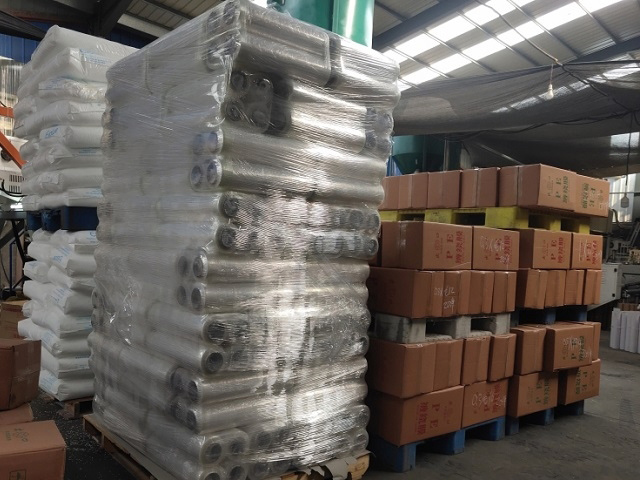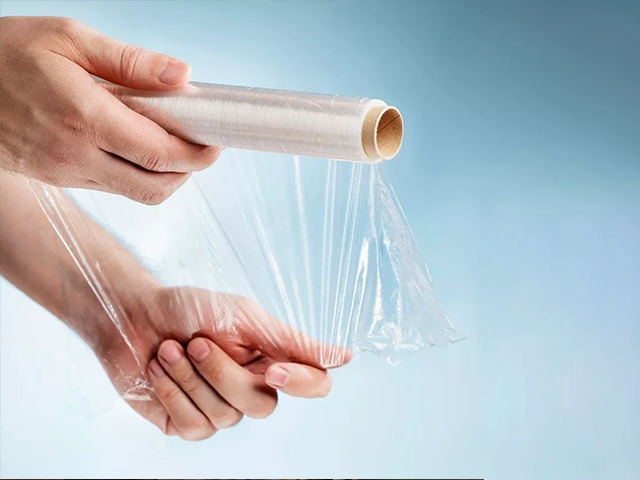- since 1985 -
- since 1985 -
Stretch film, also known as stretch wrap or shrink film, was initially produced in China using PVC as the base material and DOA as a plasticizer and self-adhesive agent to manufacture PVC stretch film.
1. Environmental issues
The non-biodegradable nature of PVC causes environmental concerns.
2.Higher cost
Cost is higher compared to PE (polyethylene) due to higher density.
3. Poor stretchability
Poor stretchability limits its effectiveness as a packaging material.
Domestic production of PE stretch film began around 1994-1995 and was gradually eliminated.
PE stretch film initially used EVA as the self-adhesive material, but it was costly and had an odor. Later, PIB and VLDPE were developed as self-adhesive materials, with LLDPE as the primary base material, including C4, C6, C8, and metallocene PE (MPE).
Stretch film machines are used to efficiently and effectively produce stretch film for various packaging applications.
Stretch film is a commonly used packaging material in the logistics industry, used to protect products during transportation.
Given its crucial role in the economy, stretch film has become an essential tool for logistics companies:
1. Securing and Stabilizing Goods
Stretch film can be used to wrap goods, securely holding them together to prevent shifting, sliding, or tilting during transportation or storage. This helps maintain the stability of goods and reduces the risk of damage and loss.
2. Protecting Goods
Stretch film provides an additional protective layer to prevent goods from being affected by external factors such as moisture, dust, contaminants, and physical damage. This is crucial for maintaining the quality and integrity of goods.

3. Theft Deterrence and Potential Damage Prevention
Stretch film can be used to seal and lock goods, reducing unauthorized access and potential theft risks. It can also reveal any signs of unauthorized entry or tampering.
4. Improving Packaging Efficiency
Stretch film can enhance packaging efficiency, especially for bulk and large goods. It can be quickly and easily applied to goods without the need for complex tools or equipment.
5. Reducing Transportation Costs
Stretch film is typically lightweight, adding minimal weight to the packaging. This helps reduce transportation costs since the overall weight of goods is lower.
6. Saving Storage Space
By allowing goods to be stacked together, stretch film reduces the need for storage space, enabling more efficient use of warehouses or storage areas.
7. Labeling and Brand Promotion
Information, labels, branding, and other markings can be printed or applied to stretch film, aiding in the identification and management of goods. It can also be used for brand promotion and identification.
Stretch film is widely used in various everyday scenarios, including:
1. Goods Packaging and Protection
Stretch film is commonly used to package goods, ensuring they remain undamaged or uncontaminated during transportation and storage. It provides additional protection, especially for fragile or sensitive items.
2. Pallet Packaging
Stretch film can be used to securely fasten goods to pallets, preventing them from moving or tilting during transportation. This is particularly useful for bulk commodities and container loading.
3. Fresh Food Packaging
In the food industry, stretch film is often used to package fresh food items such as meat, vegetables, and fruits. It helps extend the shelf life of food and prevents spoilage.

4. Construction and Building
In the construction and building industry, stretch film is used to package construction materials such as lumber, pipes, and tiles to ensure they remain dry and undamaged during transportation and storage.
5. Household Moving
People frequently use stretch film to wrap furniture and household items during relocation to prevent damage and loss. It also helps keep items clean and reduces dust ingress.
6. Art and Craft Protection
Artists and craft makers use stretch film to package and protect their creations, ensuring they remain intact during exhibitions or transportation.
7. Warehousing and Inventory Management
In warehousing and inventory management, stretch film is used for bundling, securing, and labeling goods. It helps maintain a clean and organized warehouse.
8. Agricultural Uses
Farmers use stretch film to package hay, feed, and agricultural products to protect them from moisture and contamination.
Stretch film is a versatile packaging material suitable for various industries and applications, ensuring the safety, hygiene, and freshness of goods.
It plays a critical role in modern logistics and packaging, contributing to the safe, protective, stable, and efficient packaging of goods while also reducing costs and improving packaging and logistics efficiency.